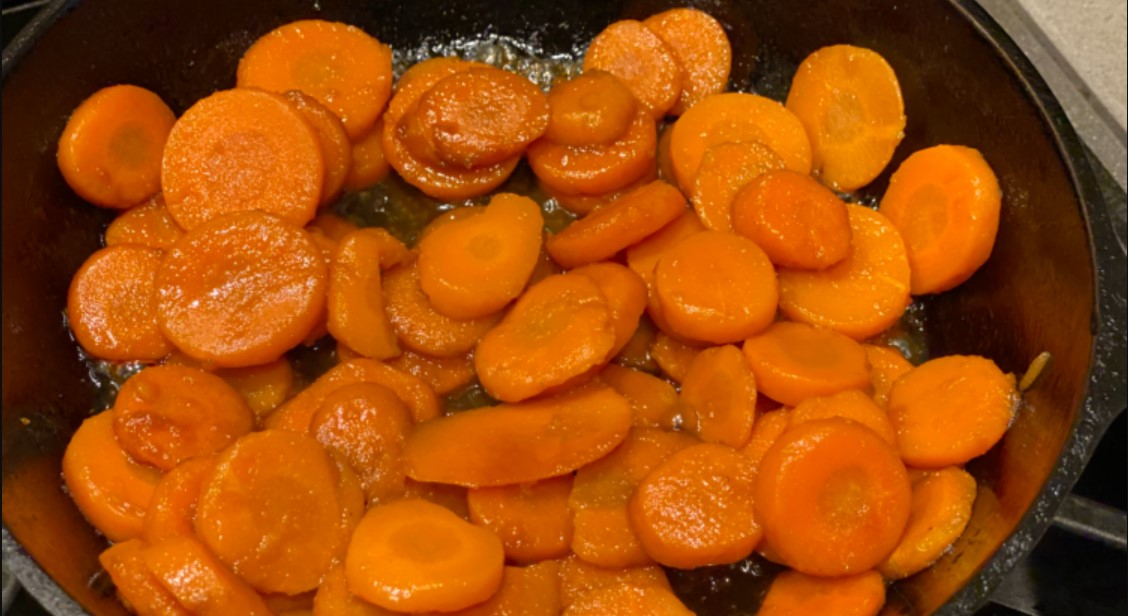The basketweave placement of the carrots makes a stunning product, thoroughly impressing the judges and deserving of a permanent placement in Mildred’s century-old kitchen. While stunning looking, the carrot coins are also delicious in stews and mixed vegetable dishes, as well as in salads or served as a side dish.
MAKES: about 4 pint jars
INGREDIENTS:
- 5 pounds whole carrots,
- 1 to 1¼ inches in diameter
- 2 teaspoons canning or pickling salt
- Boiling water
INSTRUCTIONS:
- Trim off the carrot tops and the taproot. Thoroughly scrub the carrots to remove any dirt; rinse and dry well. Peel the carrots and cut into ¼-inch slices.
- Pack the carrots into hot pint jars. Place the first three or four outer rows of carrots in the jar in a basketweave, or brick, pattern, staggering the rows so the carrots in the row above cover the joint line of the carrots in the row below. Carefully fill in the center of the rows, packing the pieces very tightly in each row so the carrots do not move. Use a skewer or a chopstick to help position the carrots.
- Continue tightly packing the rows of carrots into the jars, leaving 1-inch headspace. Add ½ teaspoon salt to each pint jar of carrots.
- Ladle the boiling water into the jars, covering the carrots and maintaining the 1-inch headspace. Remove any air bubbles. If necessary, add more liquid to maintain the headspace. Wipe the jar rims and threads with a clean, damp paper towel. Apply hot lids and screw bands.
- Process pint jars for 25 minutes at 11 pounds of pressure in a dial-gauge pressure canner or at 10 pounds of pressure in a weighted-gauge pressure canner.
- After the processing time is complete, remove the canner from the heat. Let the pressure return to zero before removing the jars from the canner. Let cool for 12 to 24 hours. Check the seals and remove the screw bands. Store jars in a cool, dry, dark place for up to 1 year.
TIP:
- Use carrots of uniform diameter and cut to the same thickness to create the best appearance. Place carrot slices of the same size in the outer rows around the inside of the jar, and use the remaining carrots to tightly pack the centers of each row to keep the carrots from moving.


